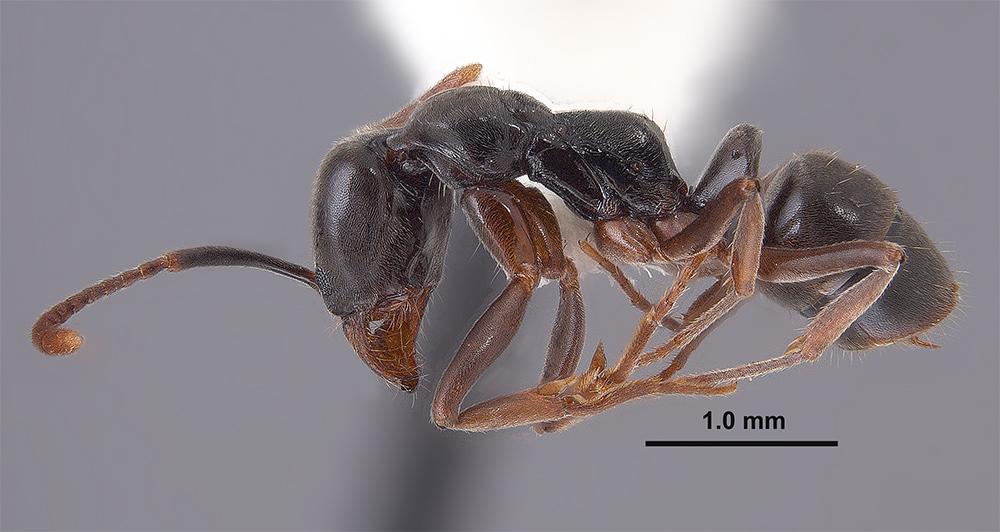MSU entomologists study expansion of Asian needle ant in Mississippi
Contact: Kaitlyn Church
STARKVILLE, Miss.—Mississippi State University researchers are tracking the spread of the Asian needle ant, a non-native species expanding across the Southeastern U.S., including parts of Mississippi.
Native to Asia, the needle ant was recorded in the U.S. in the 1930s but has expanded significantly since the 2000s.

“We first documented them in Mississippi in 2013, and they’re continuing to move,” said JoVonn Hill, director of the Mississippi Entomological Museum and assistant professor in the Mississippi Agricultural and Forestry Experiment Station, or MAFES. “They’re now abundant across the East Coast, with isolated populations into Louisiana and Arkansas.”
The sleek, shiny black ants are about the size of a fire ant and nest in shaded areas under logs, mulch or leaf litter. Though capable of stinging, they are not aggressive. Field observations show that Asian needle ants can quickly dominate shaded, damp habitats, displacing native ants and other insects.
“They’re shy,” said Joe MacGown, museum ant curator. “If disturbed, they’ll likely run—but if trapped under clothing or threatened, they can sting.”
Some individuals may experience allergic reactions. “After being stung three times, I had a mild fever and had to sit down for a while,” MacGown said. “I never experienced that with other ants.”
As MAFES researchers continue to track the spread of the Asian needle ant, they’re monitoring infested sites to document changes in native species and community composition. Current efforts are focused on the Mississippi Gulf Coast and Oxford, with expectations of continued expansion into northern Mississippi due to favorable climate conditions and human activity.
“We’ve done extensive sampling in places like Oxford and down on the Coast—areas where we’re seeing established populations,” Hill said. “We’re conducting targeted surveys along the Alabama and Tennessee borders, the Gulf Coast and on public lands to map their range and evaluate their ecological impact. The primary goal is to provide identification services, survey and monitor the spread of the species over time.”
“We’ve seen areas where Asian needle ants seem to dominate entire habitats,” Hill said. “It’s mostly anecdotal, but in places where we’d normally expect a diversity of native ants or beetles in leaf litter, we’re finding mostly—or only—Asian needle ants.”
Hill and MacGown encourage the public to report suspected sightings of Asian needle ants by emailing clear photos to MacGown at jmacgown@entomology.msstate.edu. They emphasize that photos are a safe and effective way to help without risking stings.
“They’re here, and they’re spreading,” MacGown added. “But it’s not about being scared—it’s about being informed.”
Mississippi State University is taking care of what matters. Learn more at www.msstate.edu.